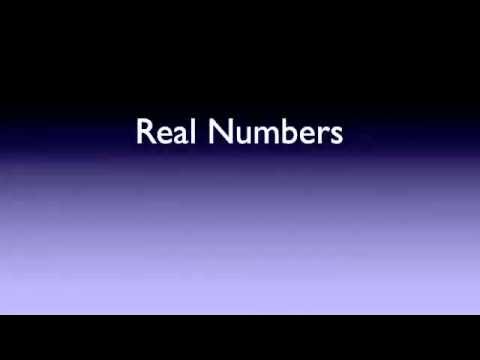CONJUNTOS NUMÉRICOS - UNIÃO E INTERSECÇÃO
Summary
TLDRThis lesson teaches operations with sets, focusing on listing elements from various sets based on given conditions, such as integers, natural numbers, and real numbers. It explains concepts like union and intersection, guiding students through understanding how to combine or find common elements in sets. The video clarifies how to interpret set notations, compare numbers using symbols like greater than or less than, and apply these ideas to solve exercises involving unions and intersections. Key takeaways include mastering set notation, performing operations on sets, and understanding their real-world applications in mathematics.
Takeaways
- 😀 Learn about set operations, starting with understanding how to list the elements of a set based on given restrictions.
- 😀 Each set is defined by specific rules or restrictions, which determine the elements included in it.
- 😀 When working with inequalities, the 'greater than' (>) and 'less than' (<) signs can be compared visually with the 'alligator mouth' analogy to remember which side is larger.
- 😀 Sets A, B, C, and D each have unique conditions that determine the elements they contain. For example, set A includes integers greater than or equal to -3 but less than or equal to 2.
- 😀 The process of listing elements involves understanding the numerical restrictions (greater than, less than, greater than or equal to, etc.).
- 😀 Union of sets is the combination of all elements from two sets, ensuring no repeated elements.
- 😀 Intersection of sets identifies common elements between two sets. This is like finding what is in both sets at the same time.
- 😀 Operations such as union and intersection are fundamental in set theory, allowing us to combine or compare sets based on shared or unique elements.
- 😀 Union of sets A and B involves combining all elements from both sets, omitting duplicates to form a unified group of elements.
- 😀 In intersections, elements common to both sets are identified and listed, and this operation helps find shared values across multiple sets.
- 😀 When operations involve multiple sets (such as union and intersection), the order of operations matters, and nested operations (like parentheses) should be evaluated first.
Q & A
What is the main focus of this lesson?
-The main focus of this lesson is to teach operations with sets, specifically union and intersection, and how to correctly list the elements of sets based on given conditions.
What does the symbol '∈' represent in set notation?
-'∈' means 'belongs to'. It indicates that an element is a member of a particular set. For example, 'x ∈ ℤ' means 'x belongs to the set of integers'.
How do you interpret the inequality 'x ≥ -4' in set notation?
-The inequality 'x ≥ -4' means that 'x' is greater than or equal to -4. This sets a limit for the elements of the set, starting from -4 and extending to greater values.
What does the 'crocodile mouth' analogy refer to in the context of comparing numbers?
-The 'crocodile mouth' analogy helps visualize the direction of inequality signs. The larger number is always on the side where the mouth is open. For example, in '4 < 8', the mouth is open towards 8 because 8 is greater than 4.
Can the number -4 be included in set A based on the given condition?
-No, -4 cannot be included in set A because the condition does not specify that -4 is less than or equal to 'x'. Only numbers greater than -4 are allowed, so the set starts at -3.
What is the rule for determining which numbers belong to set B?
-Set B includes natural numbers (positive integers and zero) that are less than or equal to 3. This means the elements of set B are 0, 1, 2, and 3.
How is the intersection of two sets defined?
-The intersection of two sets contains only the elements that are common to both sets. For example, if elements 1 and 2 are in both sets, the intersection would include just those elements: {1, 2}.
What does the union of two sets represent?
-The union of two sets includes all elements from both sets, without duplication. For example, the union of sets A and B includes all elements from A and all elements from B, with repeated elements listed only once.
Why is the number 5 not included in the set C?
-The number 5 is not included in set C because the condition specifies that 'x' must be strictly greater than -2 and strictly less than 5. Since the number 5 is not less than 5, it is excluded from set C.
What is the result of the intersection of sets A, B, and C?
-The intersection of sets A, B, and C consists of the elements that are common to all three sets. In this case, the common elements are {0, 1, 2}.
Outlines

This section is available to paid users only. Please upgrade to access this part.
Upgrade NowMindmap

This section is available to paid users only. Please upgrade to access this part.
Upgrade NowKeywords

This section is available to paid users only. Please upgrade to access this part.
Upgrade NowHighlights

This section is available to paid users only. Please upgrade to access this part.
Upgrade NowTranscripts

This section is available to paid users only. Please upgrade to access this part.
Upgrade Now5.0 / 5 (0 votes)





